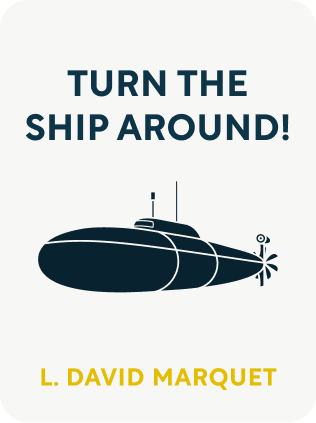

This article is an excerpt from the Shortform book guide to "Turn the Ship Around" by L. David Marquet. Shortform has the world's best summaries and analyses of books you should be reading.
Like this article? Sign up for a free trial here .
Do your team members enjoy a sense of ownership in the work they do? How can leaders create this? What difference does it make?
Submarine captain L. David Marquet explains how organizations undermine ownership. He also provides insights into how leaders can create a sense of ownership by eliminating top-down monitoring of work.
Read more to learn how to create a sense of ownership and understand the difference it can make in your organization.
A Broken System
January 28, 1999, was 152 days until Santa Fe was to be deployed. While observing the torpedo exercise, the inspection team also reviewed Santa Fe’s administrative procedures and found that officers hadn’t responded to several messages and requests from higher authorities.
They had been tracking the messages and filing them in a three-ring binder. The officers reviewed the binder once a week to forward requests and keep track of the work, but sometimes they dropped the ball. Besides being ineffective, the system meant that the officers were taking responsibility for the work of others below them.
Marquet attended the officers’ next meeting, where they discussed how to turn the system around to ensure that department heads were responsible for the work of their departments.
Eliminate Top-Down Monitoring to Create a Sense of Ownership
To replace the old tracking system, they decided to use a model similar to the daily check-out system where department heads reported to the XO for a bottom-up dialogue. They put each department head in charge of keeping track of messages relevant to his department and getting the work done.
Eliminating top-down monitoring is a mechanism for decentralizing control. The system of pushing responsibility down worked, and while they still occasionally missed something they were supposed to report on, the system of pushing responsibility downward created a greater sense of ownership among department heads.
How Organizations Undermine a Sense of Ownership
In many organizations, supervisors are frustrated that employees don’t take ownership of their work, but company procedures work against a sense of ownership. Instead of talking about ownership, it’s important to establish procedures that give people responsibility and ownership.
The first thing to do is eliminate top-down systems for monitoring people’s work. You still need systems that track data and measure what’s important, but you don’t need senior managers determining what middle managers and others should be doing.
When organizations are process-focused, they can get into an unproductive cycle. First, following processes takes precedence over achieving the objective the process is supposed to ensure. Then the goal becomes avoiding process errors. When errors happen, companies add supervisors, whose presence does nothing to achieve the original objective. All they do is point to process errors after the fact.
In the book Out of Crisis, W. Edward Deming presented leadership principles for Total Quality Leadership. He explained there’s a difference between improving and monitoring: improving processes makes an organization more efficient, while monitoring processes makes it less efficient. Having leaders constantly checking up on people undermines their responsibility and initiative.
Giving team members a sense of ownership ultimately leads to more effectiveness as well as greater job satisfaction.

———End of Preview———
Like what you just read? Read the rest of the world's best book summary and analysis of L. David Marquet's "Turn the Ship Around" at Shortform .
Here's what you'll find in our full Turn the Ship Around summary :
- How a captain turned the U.S. Navy’s worst-performing nuclear submarine crew into one of the best
- The principles for developing leaders at all levels to create a passionate, high-performing workforce
- Why the "leader-leader" model works better than the "leader-follower" model






